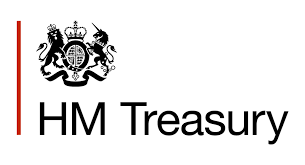The press release issued by HM Treasury on 23 July 2001.
Estimated savings of £100 million have been realised as a result of central Government applying electronic techniques to the processing and payment of procurement goods and services, Andrew Smith, Chief Secretary to the Treasury announced today.
The savings have been secured following the switch to electronic methods used in raising process orders through telephone, fax and e-mail, and through invoices paid through BACS system and the Government’s own procurement card.
Speaking about the savings, Andrew Smith said:
“The savings achieved from the government’s electronic agenda alone shows that scope within the Government’s procurement business is huge.
Doing business electronically makes practical commonsense and demonstrates the high level efficiency gains that can be achieved by encouraging Departments to adapt to the new developing ways of doing business, the electronic way.”
Peter Gershon, Chief Executive of the Office of Government Commerce, whose Department was tasked to drive forward the use of the Government Procurement Card in central Government said:
“As a catalyst for change, the OGC is demonstrating that it can make a real difference in the way the civil central Government moves forward in driving efficiency in Government procurement.
It is no longer acceptable to keep faith with old manual systems and processes. Instead we must apply modern and electronic techniques to procurement activities where it adds best value. There is scope for adding real value here.”
The savings represent the latest developments in the Government’s commitment to increase the use of electronic methods of procurement within central Government for raising and payment of transaction orders.
In answer to a Parliamentary Question from Barbara Follett MP (Stevenage) on 20 July 2001, Andrew Smith said:
“There have been £100 million in value for money gains over the last three years as a result of applying modern electronic techniques to central civil Government procurement.
Our objective was to purchase ninety per cent of low value goods and services electronically by March 2001. Recent measurements by the Office of Government Commerce indicate that at present approximately half of low value transactions are conducted electronically. Work is continuing to realise additional benefits through means such as increased use of the Government Procurement Card and the replacement of antiquated IT systems with more modern ones.”
Auto-fax, email, EDI, web-enabled online ordering and payment, electronic cataloguing and the use of purchase cards make up the types of transactions that have led to savings.
On a basis of a survey of Heads of Procurement, there are seventy five per cent more electronic transactions now than three years ago. Savings were calculated on the basis of this percentage increase in electronic transactions and the resulting savings from reduced process costs. Industry benchmarks indicate a process cost saving of £65 per end-end-procurement transaction. Government procurement savings are derived from the GPC data.
